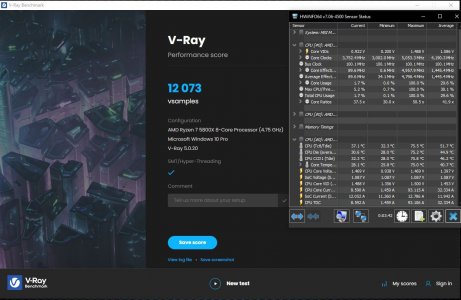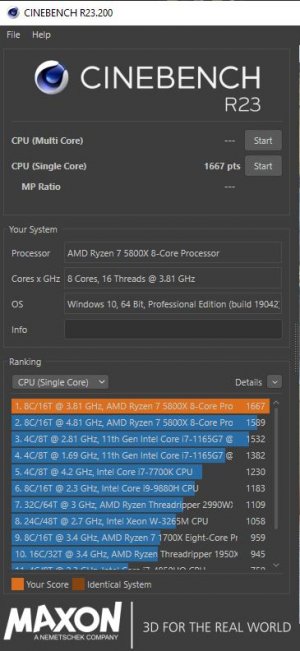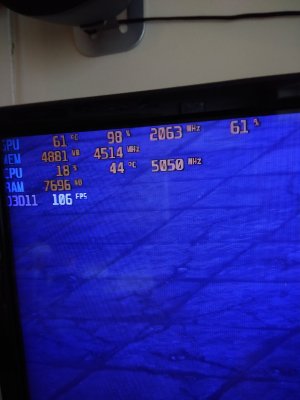Nebulous
[H]ard|Gawd
- Joined
- Nov 16, 2005
- Messages
- 1,905
I have to be a man and eat crow. My apologies to GotNoRice. You were correct and it was my bull-headedness I was overlooking the obvious. Before I removed the board, chip and cpu, I decided to re-try and overclock using the suggestion you posted:
"Just set the power limits according to your motherboard (usually a single setting where you just select "motherboard"), and bring the curve optimizer negative offset lower and lower until you become unstable, then raise it a few points"
I was able to get my 5800X to boost to a max of 5.0Ghz and an average boost between 4.75-4.9Ghz. Ran Vray and CB23 rock steady stable and max temps tapped at 80c My negative offset is -25.
Yes, my butt still hurts.
"Just set the power limits according to your motherboard (usually a single setting where you just select "motherboard"), and bring the curve optimizer negative offset lower and lower until you become unstable, then raise it a few points"
I was able to get my 5800X to boost to a max of 5.0Ghz and an average boost between 4.75-4.9Ghz. Ran Vray and CB23 rock steady stable and max temps tapped at 80c My negative offset is -25.
Yes, my butt still hurts.
![[H]ard|Forum](/styles/hardforum/xenforo/logo_dark.png)



